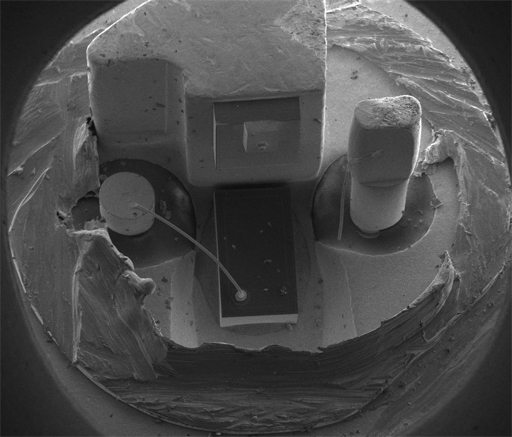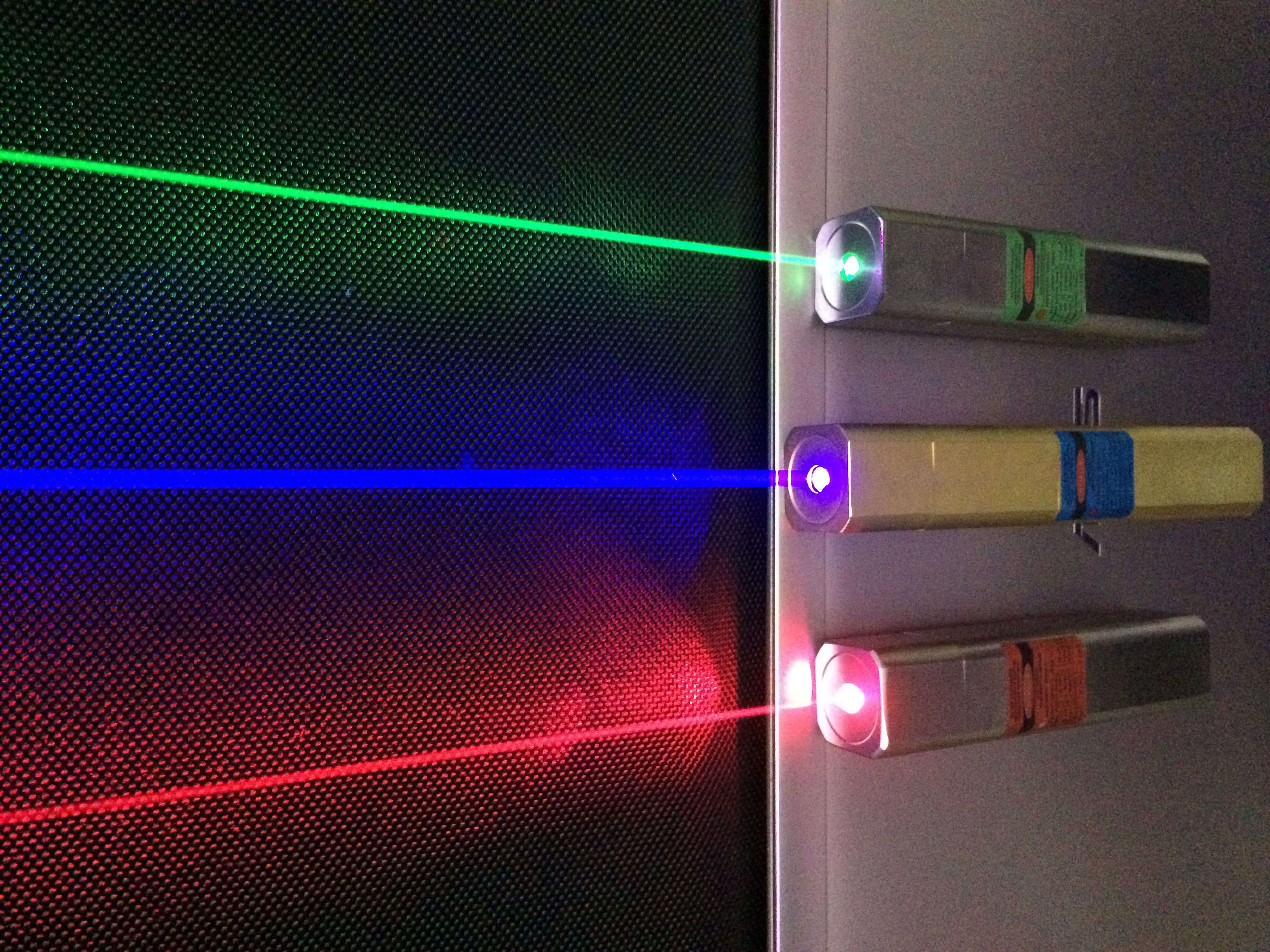|
Gain Spectroscopy Of Semiconductors
Optical gain is the most important requirement for the realization of a semiconductor laser because it describes the optical amplification in the semiconductor material. This optical gain is due to stimulated emission associated with light emission created by recombination of electrons and holes. While in other laser materials like in gas lasers or solid state lasers, the processes associated with optical gain are rather simple, in semiconductors this is a complex many-body problem of interacting photons, electrons, and holes. Accordingly, understanding these processes is a major objective as being a basic requirement for device optimization. This task can be solved by development of appropriate theoretical models to describe the semiconductor optical gain and by comparison of the predictions of these models with experimental results found. Theory for optical gain in semiconductors Since defining semiconductor's optical gain is an ambitious undertaking, it is useful to b ... [...More Info...] [...Related Items...] OR: [Wikipedia] [Google] [Baidu] |
Laser Diode
file:Laser diode chip.jpg, The laser diode chip removed and placed on the eye of a needle for scale A laser diode (LD, also injection laser diode or ILD, or diode laser) is a semiconductor device similar to a light-emitting diode in which a diode pumped directly with electrical current can create active laser medium, lasing conditions at the diode's p–n junction, junction. Driven by voltage, the doped p–n-transition allows for Carrier generation and recombination, recombination of an electron with a Electron hole, hole. Due to the drop of the electron from a higher energy level to a lower one, radiation, in the form of an emitted photon is generated. This is spontaneous emission. Stimulated emission can be produced when the process is continued and further generates light with the same phase, coherence and wavelength. The choice of the semiconductor material determines the wavelength of the emitted beam, which in today's laser diodes range from infra-red to the UV spectrum ... [...More Info...] [...Related Items...] OR: [Wikipedia] [Google] [Baidu] |
Density Of States
In solid state physics and condensed matter physics, the density of states (DOS) of a system describes the number of modes per unit frequency range. The density of states is defined as D(E) = N(E)/V , where N(E)\delta E is the number of states in the system of volume V whose energies lie in the range from E to E+\delta E. It is mathematically represented as a distribution by a probability density function, and it is generally an average over the space and time domains of the various states occupied by the system. The density of states is directly related to the dispersion relations of the properties of the system. High DOS at a specific energy level means that many states are available for occupation. Generally, the density of states of matter is continuous. In isolated systems however, such as atoms or molecules in the gas phase, the density distribution is discrete, like a spectral density. Local variations, most often due to distortions of the original system, are often referr ... [...More Info...] [...Related Items...] OR: [Wikipedia] [Google] [Baidu] |
Diode Laser
The laser diode chip removed and placed on the eye of a needle for scale A laser diode (LD, also injection laser diode or ILD, or diode laser) is a semiconductor device similar to a light-emitting diode in which a diode pumped directly with electrical current can create lasing conditions at the diode's junction. Driven by voltage, the doped p–n-transition allows for recombination of an electron with a hole. Due to the drop of the electron from a higher energy level to a lower one, radiation, in the form of an emitted photon is generated. This is spontaneous emission. Stimulated emission can be produced when the process is continued and further generates light with the same phase, coherence and wavelength. The choice of the semiconductor material determines the wavelength of the emitted beam, which in today's laser diodes range from infra-red to the UV spectrum. Laser diodes are the most common type of lasers produced, with a wide range of uses that include fiber optic comm ... [...More Info...] [...Related Items...] OR: [Wikipedia] [Google] [Baidu] |
Fabry–Pérot Interferometer
In optics, a Fabry–Pérot interferometer (FPI) or etalon is an optical cavity made from two parallel reflecting surfaces (i.e.: thin mirrors). Optical waves can pass through the optical cavity only when they are in resonance with it. It is named after Charles Fabry and Alfred Perot, who developed the instrument in 1899. ''Etalon'' is from the French ''étalon'', meaning "measuring gauge" or "standard". Etalons are widely used in telecommunications, lasers and spectroscopy to control and measure the wavelengths of light. Recent advances in fabrication technique allow the creation of very precise tunable Fabry–Pérot interferometers. The device is technically an interferometer when the distance between the two surfaces (and with it the resonance length) can be changed, and an etalon when the distance is fixed (however, the two terms are often used interchangeably). Basic description The heart of the Fabry–Pérot interferometer is a pair of partially reflective glass ... [...More Info...] [...Related Items...] OR: [Wikipedia] [Google] [Baidu] |
Lasing Threshold
The lasing threshold is the lowest excitation level at which a laser's output is dominated by stimulated emission rather than by spontaneous emission. Below the threshold, the laser's output power rises slowly with increasing excitation. Above threshold, the slope of power vs. excitation is orders of magnitude greater. The linewidth of the laser's emission also becomes orders of magnitude smaller above the threshold than it is below. Above the threshold, the laser is said to be ''lasing''. The term "lasing" is a back formation from "laser," which is an acronym, not an agent noun. Theory The lasing threshold is reached when the optical gain of the laser medium is exactly balanced by the sum of all the losses experienced by light in one round trip of the laser's optical cavity. This can be expressed, assuming steady-state operation, as :R_1 R_2\exp(2g_\text\,l) \exp(-2\alpha l) = 1. Here R_1 and R_2 are the mirror (power) reflectivities, l is the length of the gain medium, \exp( ... [...More Info...] [...Related Items...] OR: [Wikipedia] [Google] [Baidu] |
Semiconductor Laser Theory
Semiconductor lasers or laser diodes play an important part in our everyday lives by providing cheap and compact-size lasers. They consist of complex multi-layer structures requiring nanometer scale accuracy and an elaborate design. Their theoretical description is important not only from a fundamental point of view, but also in order to generate new and improved designs. It is common to all systems that the laser is an inverted carrier density system. The carrier inversion results in an electromagnetic polarization which drives an electric field E(t). In most cases, the electric field is confined in a resonator, the properties of which are also important factors for laser performance. Gain medium In semiconductor laser theory, the optical gain is produced in a semiconductor material. The choice of material depends on the desired wavelength and properties such as modulation speed. It may be a bulk semiconductor, but more often a quantum heterostructure. Pumping may be elect ... [...More Info...] [...Related Items...] OR: [Wikipedia] [Google] [Baidu] |
Polarization (waves)
Polarization (also polarisation) is a property applying to transverse waves that specifies the geometrical orientation of the oscillations. In a transverse wave, the direction of the oscillation is perpendicular to the direction of motion of the wave. A simple example of a polarized transverse wave is vibrations traveling along a taut string ''(see image)''; for example, in a musical instrument like a guitar string. Depending on how the string is plucked, the vibrations can be in a vertical direction, horizontal direction, or at any angle perpendicular to the string. In contrast, in longitudinal waves, such as sound waves in a liquid or gas, the displacement of the particles in the oscillation is always in the direction of propagation, so these waves do not exhibit polarization. Transverse waves that exhibit polarization include electromagnetic waves such as light and radio waves, gravitational waves, and transverse sound waves (shear waves) in solids. An electromagnetic wa ... [...More Info...] [...Related Items...] OR: [Wikipedia] [Google] [Baidu] |





